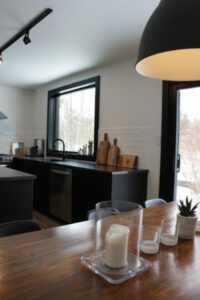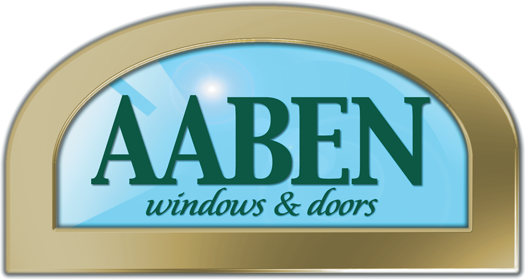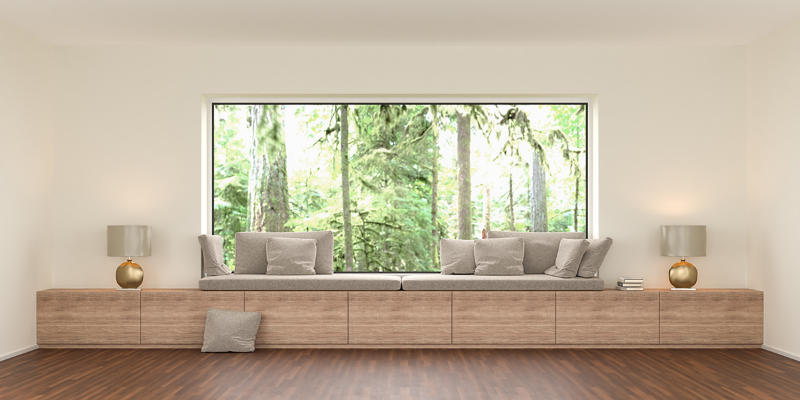Why is glass called glass?
The term glass developed in the late Roman Empire. The late-Latin term glesum originated in the Roman glassmaking centre at Trier (located in current-day Germany). It was most likely derived from a Germanic word for transparent.
Did you know Ancient Rome was the first civilization to have glass windows?
 Around 100 AD, Romans discovered the process of heating/mixing sand with other materials so it could be pressed/cast into small pieces and then formed into panes. However, it was a tedious, expensive and imperfect art. Bubbles commonly disfigured the glass and only the wealthy could afford to use it as windows in their homes. (Photo: Fragments of an Ancient Roman window pane dated to 1st to 4th century AD. Credit: Creative Commons Attribution-Share Alike 3.0 Unported license.)
Around 100 AD, Romans discovered the process of heating/mixing sand with other materials so it could be pressed/cast into small pieces and then formed into panes. However, it was a tedious, expensive and imperfect art. Bubbles commonly disfigured the glass and only the wealthy could afford to use it as windows in their homes. (Photo: Fragments of an Ancient Roman window pane dated to 1st to 4th century AD. Credit: Creative Commons Attribution-Share Alike 3.0 Unported license.)
So how did glass windows become popular?
 Almost every technique involved in glassmaking today was created or experimented with by the Romans. Greater efficiency in glassmaking contributed to making glass windows a societal standard. By the 1700s, glass windows became the rule as prices for making/purchasing it decreased. However, it was a slow process, as a window that required 24 panes in the 1700s might have only six panes fifty years later. It wasn’t until the Industrial Revolution that the machine-cylinder method of production made glass windows affordable for many people. (Photo: Example of a 16th century Roman window with multiple small panes of glass. Credit: www.thenbs.com)
Almost every technique involved in glassmaking today was created or experimented with by the Romans. Greater efficiency in glassmaking contributed to making glass windows a societal standard. By the 1700s, glass windows became the rule as prices for making/purchasing it decreased. However, it was a slow process, as a window that required 24 panes in the 1700s might have only six panes fifty years later. It wasn’t until the Industrial Revolution that the machine-cylinder method of production made glass windows affordable for many people. (Photo: Example of a 16th century Roman window with multiple small panes of glass. Credit: www.thenbs.com)
How has the process of manufacturing glass windows evolved over time?
The production of the glass itself has been made faster with the use of machinery and the quality of the glass has improved astronomically. For example, now glass windows are cooled and reheated slowly or tempered to increase strength and prevent shattering. Also, the glass can be coated with insulating glazes, heat absorbing tints, or other coatings. Over time, people became more concerned with window performance. We now have ENERGY STAR® certified windows. There are a number of options for upgrading the energy efficiency of your windows including low-emissivity (low-E) glass, inert gas, such argon or krypton in the sealed unit, low conductivity or warm-edge spacer bars, and insulated frames and sashes.
However, even the most well-engineered window won’t perform effectively if it has been improperly installed. That is why, unlike most of our competition, at Aaben Windows and Doors, we never subcontract our installations. Our carpenters are our own long time employees whose expertise in their field is matched only by their attention to detail.
Everything old is new again (and now energy-efficient).
 Glass windows became popular because of their beautiful design aesthetic and as pieces of artwork. Today, windows are once again elevated to beautiful show pieces in our homes. The selection of styles and features available today is almost overwhelming. And then you add in the choices of a variety of hardware and grill profiles for endless combinations. A brief description of window types can be found here. At Aaben, our highly trained, non-commissioned staff can help you sort through all the options to find the right solution to your project and your budget. (Photo: Example of a modern window that is decorative and energy efficient. Credit: www.evw.ca)
Glass windows became popular because of their beautiful design aesthetic and as pieces of artwork. Today, windows are once again elevated to beautiful show pieces in our homes. The selection of styles and features available today is almost overwhelming. And then you add in the choices of a variety of hardware and grill profiles for endless combinations. A brief description of window types can be found here. At Aaben, our highly trained, non-commissioned staff can help you sort through all the options to find the right solution to your project and your budget. (Photo: Example of a modern window that is decorative and energy efficient. Credit: www.evw.ca)
Aaben Windows and Doors continues to be one of Kingston’s leading retailers and installers of the finest windows and doors available in North America. We provide premium products, full time carpenters on staff, have solutions for a range of budgets and a warranty that means something. Contact us for a hassle-free quote today.



